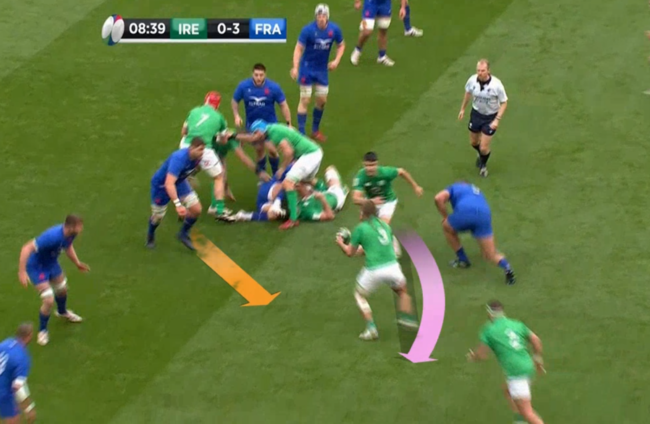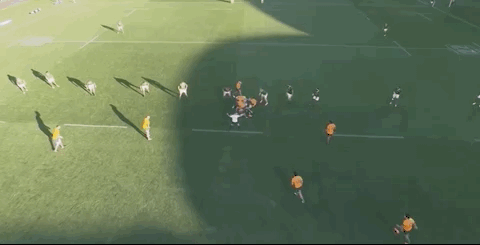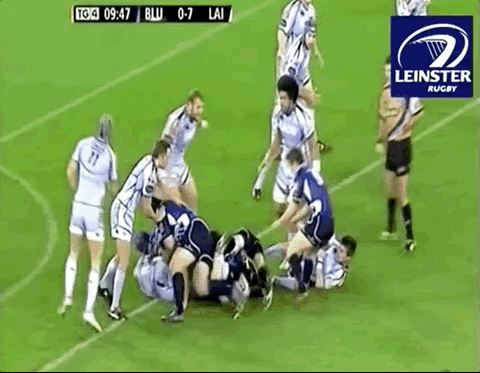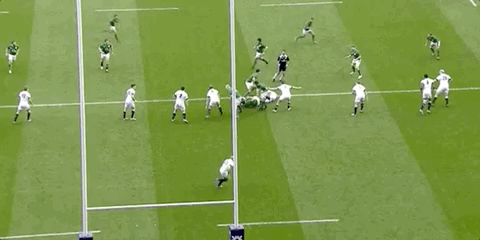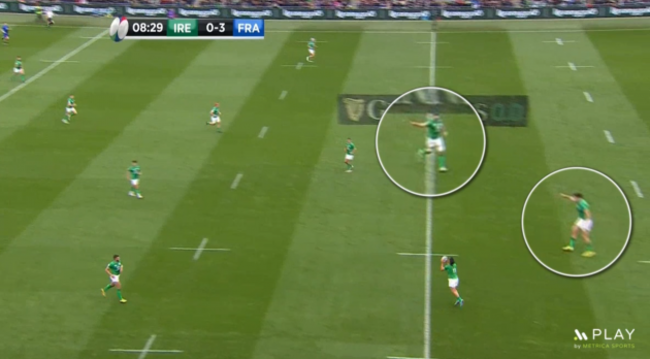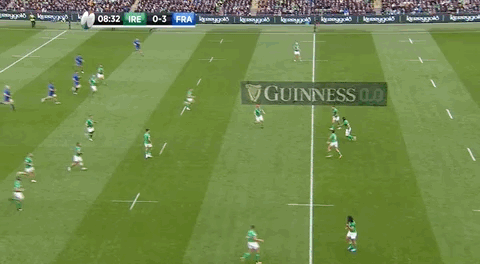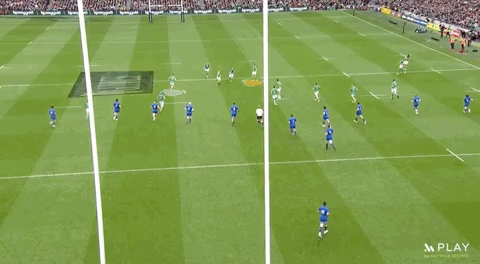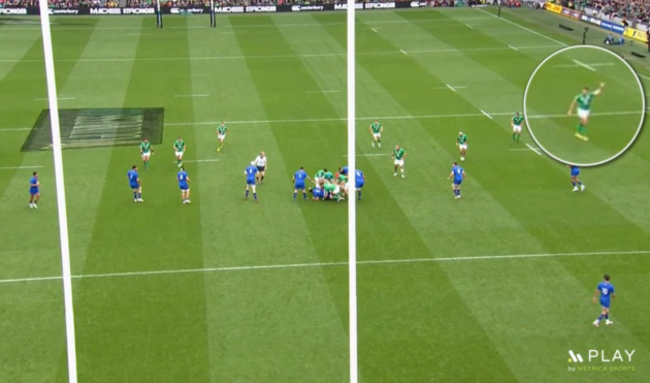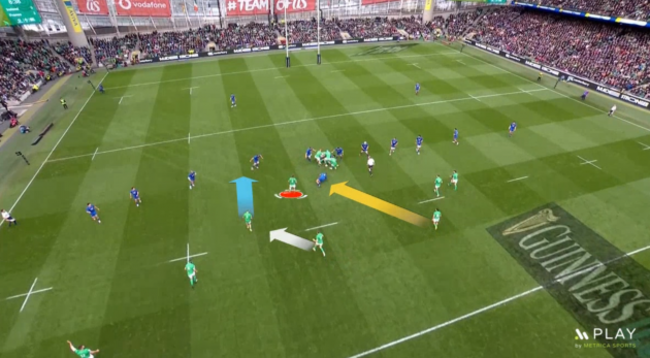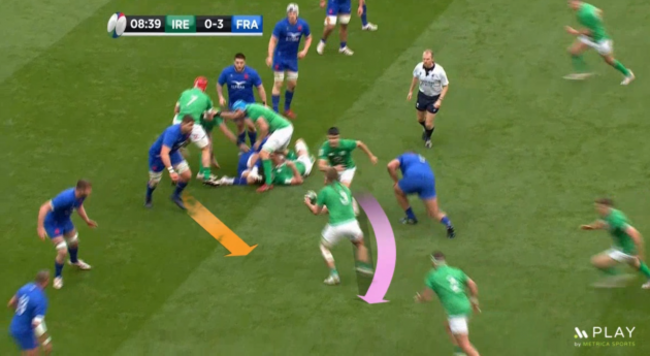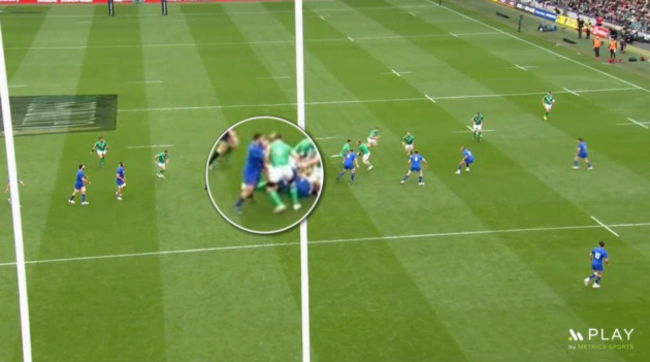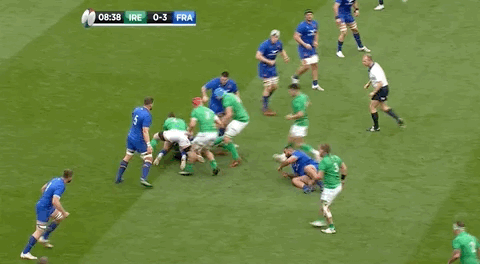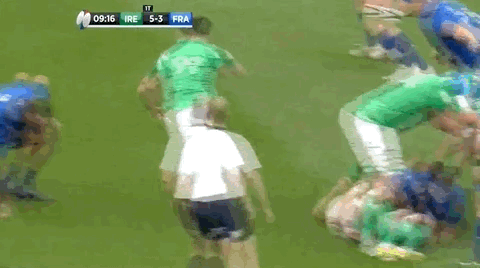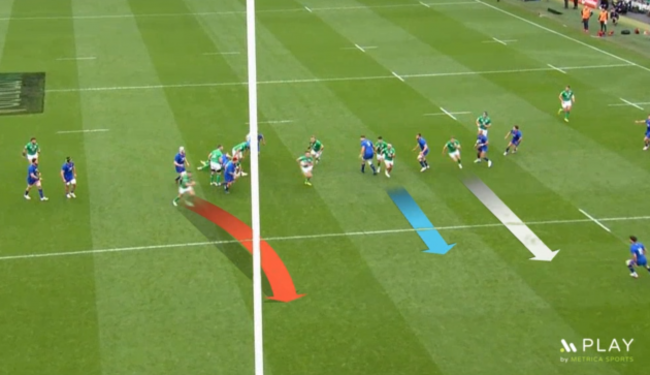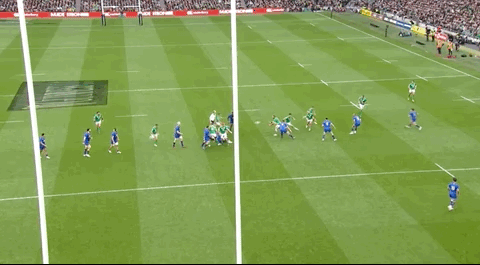WITHIN 10 MINUTES of kick-off, Ireland had underlined that they meant business in attack.
Hugo Keenan’s brilliant opening try demonstrated that Andy Farrell’s team were diligently-prepared and laser-focused. It wasn’t all plain sailing from that point but Ireland deservedly earned a bonus-point 32-19 win over France yesterday.
For their first try, they struck with a brilliant two-phase play they had clearly worked hard on in the build-up to this game. The goal-line drop-out has become another set-piece in rugby and Ireland have evidently spent some time on it.
The play that Hugo Keenan scored off is one Australia used against South Africa last year.
This Wallabies try came on second phase after a Springboks goal-line drop-out and they struck after their number eight had carried into a midfield position.
As many Irish fans know, the dummy loop play with the scrum-half darting around a ball-handling forward was first used in the professional era by Joe Schmidt’s Leinster way back in January 2012 against the Cardiff Blues, albeit from lineout attack.
Johnny Sexton is in the number 10 shirt for Leinster in the example above.
Leinster pulled out this play – which was called ‘two 10 bag hook’ – most famously against Clermont in the 2012 Heineken Cup semi-finals, while Schmidt’s Ireland team used it intermittently over the years too.
Below, we see Kearney scoring off it in 2014 against England.
In the clip above, Conor Murray is at scrum-half for Ireland, while Sexton is in support as Kearney finishes. Peter O’Mahony is involved in the breakdown and current Ireland forwards coach Paul O’Connell is making a nuisance of himself ahead of the ball.
Those Leinster and Ireland sides ran it off lineouts when there was no such thing as a goal-line drop-out.
So while Ireland were clearly inspired by the Wallabies last year, it is fitting that the play has its origins in the Schmidt era of Irish rugby.
Even as James Lowe is fielding Romain Ntamack’s restart in this instance, we can see Ireland’s eagerness to launch their planned strike play. Note below how Keenan is pointing to Caelan Doris, while the Irish number eight is also signalling to Lowe as he retreats.
Ireland’s plan involves having Doris make a strong carry in the middle of the pitch, so Lowe and Keenan move the ball into his hands with two quick passes.
Doris then produces a huge carry to give Ireland instant momentum.
This is a great example of Doris’ excellent footwork as he initially looks like he will just accelerate into contact but instead sells Uini Atonio by stepping to the French prop’s left and then instantly bursting to his right to run through his arm rather than into his shoulder. Doris fights through the contact and finishes with a clean placement of the ball.
France hooker Julien Marchand is the one who makes the tackle in behind but Doris has got Ireland moving forward and the arriving O’Mahony clears Marchand away as Tadhg Beirne and Josh van der Flier also resource the breakdown.
It means a lightning-quick recycle for Ireland and therefore no time for the French to get a read on the play.
As Doris is carrying, there is lots going on away from the ball as Ireland’s players get set to strike on second phase. Watch below how Keenan [yellow] and Garry Ringrose [white] move into their slots.
We also see here how McCloskey signals for the ball wide on Ireland’s left, keen as he is to draw eyes away from closer to the ruck where Ireland will actually make the break.
As we switch to the angle behind Ireland, we’ve illustrated the roles of the players involved to the left of the ruck.
Tighthead prop Finlay Bealham [red below] is the fulcrum around whom the play operates, while hooker Rob Herring [blue] runs a short line just outside Bealham.
Ringrose [white above] is tasked with running out the back of Herring to provide a potential passing option there.
But Keenan [yellow] is the real strike runner, swinging from a deep position to the right of the ruck as late as possible so as not to give the French any early cues to read.
Of course, scrum-half Murray [pink below] is a key man in this play as he runs a dummy loop line around Bealham to draw the defence away from the fringe of the ruck.
Atonio is still getting off the ground after being beaten by Doris, so France need to be sharp with one fewer defender available close to the ruck. Ireland want to drag the first French defender on this side, Paul Willemse [orange above], as wide from the ruck as possible.
Ireland also know they need to prevent a late French fold from the far side of the ruck, so note below what O’Mahony does after clearing Marchand away.
O’Mahony gets back to his feet after dealing with Marchand and, encouraged by a push from van der Flier, steps into France loosehead prop Cyril Baille as he attempts to get across to the other side.
It’s illegal to block players off the ball but O’Mahony’s work is so subtle as to go completely unnoticed. Not even Baille himself protests. To be fair, Baille might not have been able to slow Keenan at all but O’Mahony takes that possibility out of the equation.
This is ‘dark arts’ work from O’Mahony and it’s worth remembering that the old Schmidt play had this role ahead of the ruck built into it. O’Connell was that man in the 2014 example.
Going back to present day, Ireland’s strike is slick as Murray loops around Bealham, who shows lovely sleight of hand to dummy a pop back to Murray before flicking the ball inside to the late-arriving Keenan.
It’s a classy bit of playmaking from Bealham.
In France’s minds, Bealham is a carrying threat off Murray here too, which further lures Willemse into breaking away from the ruck.
We can also see above how Ringrose’s run out the back draws the eyes of Anthony Jelonch and Gael Fickou outside Willemse. No one picks out the threat of Keenan until it’s too late.
With Ireland all so thoroughly on the same page, Keenan has lots of support in behind.
Characteristically, Sexton [red above] is actually ahead of the ball initially as he breaks from the other side of the ruck where he has been offering an option to keep some of the French defenders on that side occupied.
Herring [blue] and Ringrose [white] get through the line on Ireland’s left to give Keenan options on either side, while Murray also follows up.
Keenan does a superb job of keeping the ball in two hands until the last moment, dummying a pass to his left, with Ntamack sitting off him as a result.
Ramos is moving at high speed across from Keenan’s right but he can’t get there in time to prevent the Irish fullback from finishing a wonderful score.
The Irish players’ delight at pulling off a play they had worked on was clear as Sexton slid in to spark a mini pile-on.
All tries are worth five points but a score like this that sees analysis, preparation, and execution come together perfectly is always deeply satisfying.
Get instant updates on your province on The42 app. With Laya Healthcare, official health and wellbeing partner to Leinster, Munster and Connacht Rugby.
